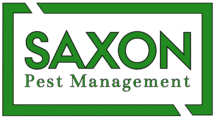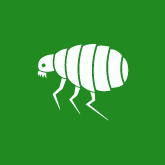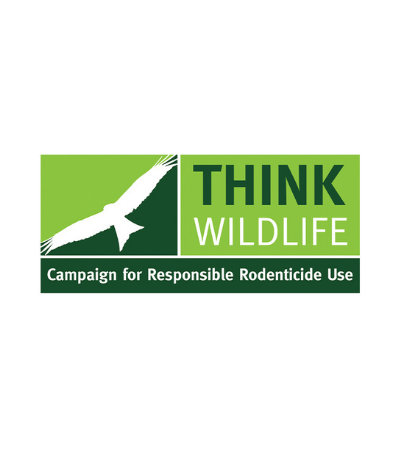Summer brings long days, warm weather, and unfortunately for many pet owners, an increase in wasp activity around our homes and gardens. If you’ve noticed more wasps buzzing around your outdoor spaces where your dog loves to play, you’re not imagining things. Understanding when and why these insects become more active can help you better protect your furry friend during outdoor adventures.
Wasps follow predictable seasonal patterns that directly impact when you’ll encounter them most frequently. Their lifecycle, weather dependencies, and food preferences all contribute to making summer their peak activity period. For dog owners who spend more time outdoors during warmer months, knowing what attracts these insects and when they’re most active becomes essential for safe backyard fun.
This guide explores the science behind summer wasp activity, helping you understand their seasonal behavior patterns so you can better prepare for those outdoor moments with your dog.

When Wasp Season Peaks in the UK
Wasp activity in the UK typically begins in April and reaches its peak during August and September. The season starts when queen wasps emerge from hibernation in spring, seeking suitable locations to establish new colonies. However, the real surge in wasp encounters happens much later in the season.
Early summer sees relatively few wasps as colonies are still developing. Worker wasps focus primarily on building the nest and caring for larvae, keeping them occupied away from human activity. The dramatic increase in wasp sightings occurs during late summer, particularly from July through September, when colonies reach their maximum size.
Research Insight: Pest control experts note that a single nest can contain 5,000–15,000 wasps at peak season. In some years, warmer, drier springs allow more queens to survive, leading to “exploding wasp numbers”, with nests reported “the size of space hoppers” in 2025 (The Sun).
The season typically winds down by October as temperatures drop and food sources become scarce. Most worker wasps die off with the first hard frost, while only mated queens survive to hibernate through winter.
Table: UK Wasp Activity by Season
| Phase | Months | Activity | Dog Owner Relevance |
| Emergence | Apr–May | Queens establish nests | Low risk |
| Growth | Jun–Jul | Workers forage for protein | Some garden presence |
| Peak | Aug–Sep | Colony largest, sugar craving | High risk outdoors |
| Decline | Oct | Workers die, queens hibernate | Risk decreases |
How Weather Shapes Wasp Populations
Temperature plays the most significant role in wasp activity levels. Wasps are cold-blooded insects, meaning their metabolism and activity directly correlate with ambient temperature. Warm, sunny days accelerate their development and increase their foraging behavior, while cool, wet weather keeps them relatively inactive.
Rainfall affects wasp populations in multiple ways. Heavy spring rains can flood underground nests or damage exposed colonies, reducing overall population numbers for that season. However, moderate rainfall followed by warm weather creates ideal conditions for plant growth, which supports the insects and small prey that wasps feed on.
Extended periods of hot, dry weather can actually increase wasp encounters around human activity. During drought conditions, wasps become more desperate for water sources, leading them to investigate pet water bowls, garden irrigation systems, and other moisture sources near your home.
Humidity levels also influence wasp behavior. High humidity combined with warm temperatures creates optimal conditions for wasp flight and foraging, explaining why muggy summer days often bring the most wasp encounters.
Expert View: “The warm, dry conditions have created the ideal environment for wasps to thrive. That means more colonies, more wasps and a longer season.” — Prof. Seirian Sumner, UCL (UCL, 2025).
Late Summer Behavioral Changes
August and September mark a crucial shift in wasp behavior that makes them particularly problematic for outdoor activities. During early summer, worker wasps focus on hunting protein sources like other insects to feed developing larvae. This protein-focused diet keeps them away from human food sources.
However, once larvae mature and stop requiring protein-rich food, worker wasps suddenly find themselves without their primary purpose. Colony reproduction shifts focus to producing new queens and males, leaving workers free to seek out their preferred food: sugars and carbohydrates.
This behavioral shift explains why wasps become increasingly attracted to human food sources during late summer. They actively seek out sugary drinks, ripe fruits, ice cream, and other sweet foods that weren’t of interest earlier in the season. For dog owners enjoying outdoor barbecues or picnics, this means increased wasp attention around food and drinks.
Late summer wasps also become more aggressive and persistent. With winter approaching and colony survival at stake, they’re more likely to defend food sources and less likely to retreat when disturbed. This increased aggression poses greater risks for curious dogs who might investigate or accidentally disturb wasps.
Common Nesting Locations Around UK Homes
Understanding where wasps build their nests helps dog owners identify potential problem areas before they become dangerous. Wasps seek locations that offer protection from weather while remaining accessible for foraging flights.
- Underground nests in old rodent burrows pose risks for digging dogs.
- Wall cavities attract wasps through small cracks in buildings.
- Roof spaces and eaves provide sheltered, elevated locations.
- Sheds and garages often conceal growing colonies.
- Trees, hollows, shrubs are natural nest sites dogs may disturb.
- Compost bins / equipment stacks create manmade cavities.
What Draws Wasps to Gardens and Food
Several factors make residential gardens attractive to wasps, creating the encounters that concern dog owners.
- Fruit trees / fallen fruit ferment sugars that wasps crave.
- Flowering plants attract both nectar and prey.
- Water sources (bowls, ponds, irrigation) lure thirsty wasps.
- Outdoor dining residues like barbecue drippings and drink spills attract foragers.
- Bins and compost provide both food and shelter.
The Complex Role of Summer Wasps
Despite their reputation as garden pests, wasps provide significant ecological benefits that affect overall garden health. Understanding their positive contributions helps dog owners appreciate the balance between managing wasp encounters and supporting beneficial insect populations.
- Natural pest control: A single colony can consume thousands of caterpillars, flies, and aphids each season.
- Pollination: Wasps support pollination of plants.
- Ecosystem balance: They provide food for birds and other wildlife.
However, the benefits come with risks for dogs: stings, allergic reactions, and aggression in late summer.
Keeping Your Dog Safe During Wasp Season in UK
Understanding wasp behavior patterns empowers dog owners to make informed decisions about outdoor activities during peak wasp season in UK. Regular garden maintenance, proper food storage, and awareness of nesting locations help minimize dangerous encounters while still allowing dogs to enjoy summer outdoor time.
Practical tips include:
- Keep water bowls shaded and away from feeding zones.
- Pick up fallen fruit promptly.
- Seal bins and compost tightly.
- Inspect sheds and eaves early in spring.
- Avoid leaving sugary foods/drinks uncovered outside.
- Supervise dogs that dig.
Monitor your dog’s behavior around potential wasp areas, and consider keeping outdoor food and water sources away from known wasp traffic patterns. With proper precautions, both you and your furry friend can navigate wasp season safely while appreciating these complex insects’ role in garden ecosystems.
Remember that wasp activity will naturally decrease as autumn progresses and temperatures drop, making late fall and winter ideal times for extensive garden projects or thorough cleaning of potential nesting sites.
If wasps are disrupting your garden or putting your dog at risk, Saxon Pest Management offers safe and professional wasp nest removal across Romford, Essex, and East London. Contact us today for fast help.
Frequently Asked Questions (FAQs)
1- Why are wasps more common in summer than in other seasons?
Wasps follow a seasonal life cycle. In spring, a small number of queen wasps emerge and establish nests. Over the summer, the colony expands; by late summer, there are many workers. Warm temperatures speed up foraging and nest growth, and as natural food becomes scarcer, wasps begin to target human food sources.
2- When does wasp activity peak (especially in the UK)?
In the UK, wasp activity often begins in April–May (when queens emerge) but truly peaks in August to September, when colony size is maximal and food competition is high.
3- Why do wasps become more aggressive or persistent in late summer?
As their life cycle shifts, worker wasps no longer need to collect protein for developing larvae, so they start seeking out sugars and carbohydrates (e.g. fruits, sweet drinks). Also, with reduced food sources and more territorial pressure, they become more defensive and bold around human activity.
4- Why do wasps become more aggressive or persistent in late summer?
Wasps can sting multiple times, and a dog may step on or attempt to catch one. Typical mild reactions include swelling, redness, pain, licking or pawing at the sting site, and restlessness. In more serious cases (especially if stung in the throat, mouth, or multiple stings), dogs may show signs of difficulty breathing, collapse, vomiting, or facial swelling.
5- What should I do if my dog is stung by a wasp?
- Move your dog away from the wasp or nest to a safe location.
- Check for stinger(s) and remove gently (e.g. with a credit card blade or tweezers) if present.
- Apply a cold compress or ice pack to reduce swelling.
- Monitor closely for signs of allergic reaction (difficulty breathing, collapse, facial swelling).
- Contact a veterinarian immediately if you suspect a serious reaction.
- Only administer antihistamines or other medications under veterinary guidance (don’t self-dose).
6- How can I reduce the chances of wasp encounters in my garden (especially if I have a dog)?
- Remove or collect fallen fruit promptly (fermenting fruit attracts wasps).
- Keep pet food and water bowls away from high-traffic areas and avoid leaving them out uncovered.
- Seal trash bins and composts tightly.
- Inspect potential nesting sites around the home (eaves, wall cavities, sheds) early in the season.
- Avoid leaving sweet foods or drinks uncovered outdoors.
- Be cautious when your dog digs or explores near possible nest sites.
7- Do wasps provide any ecological benefits (or are they purely pests)?
Despite their nuisance, wasps play beneficial roles: they help control pest insects (eating caterpillars, flies, etc.), assist in pollination, and contribute to ecosystem balance (as prey for other species). The challenge for dog owners is managing their presence safely, rather than eradicating them entirely.






















